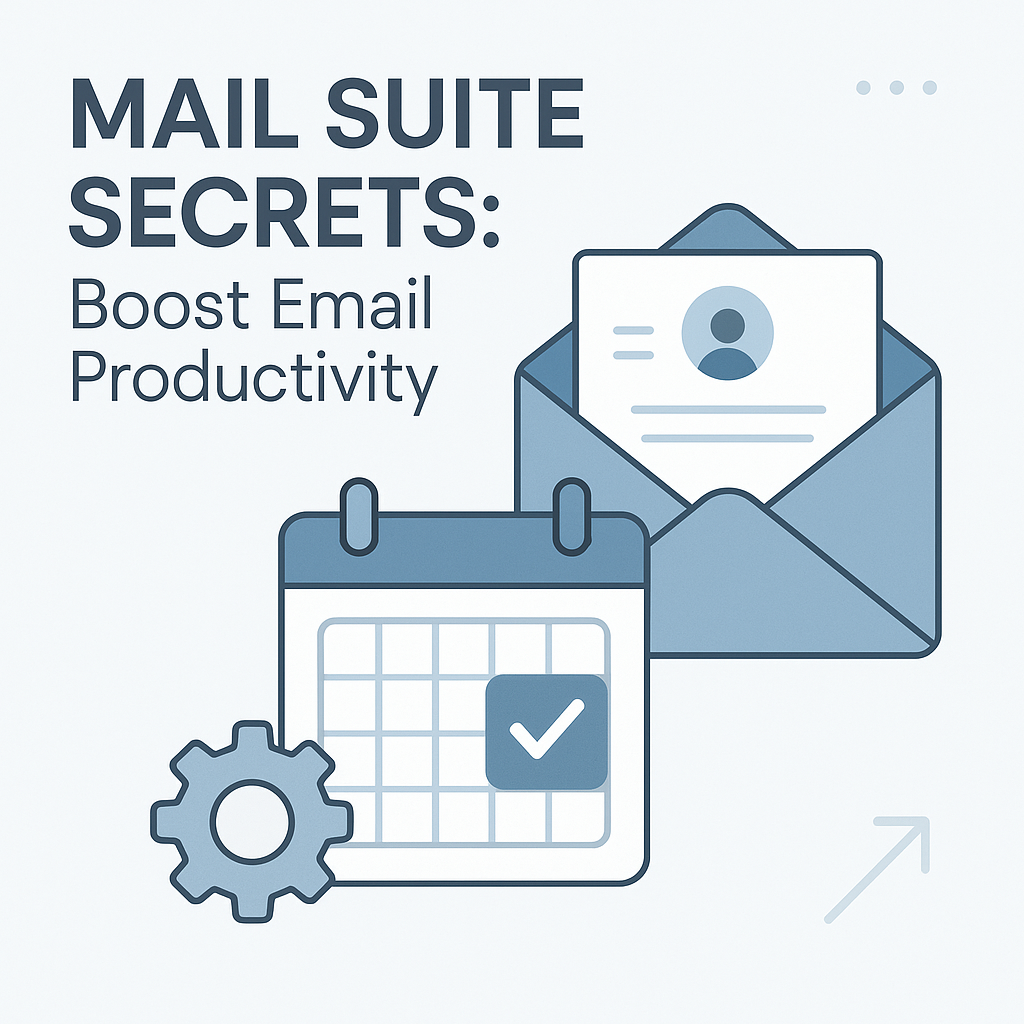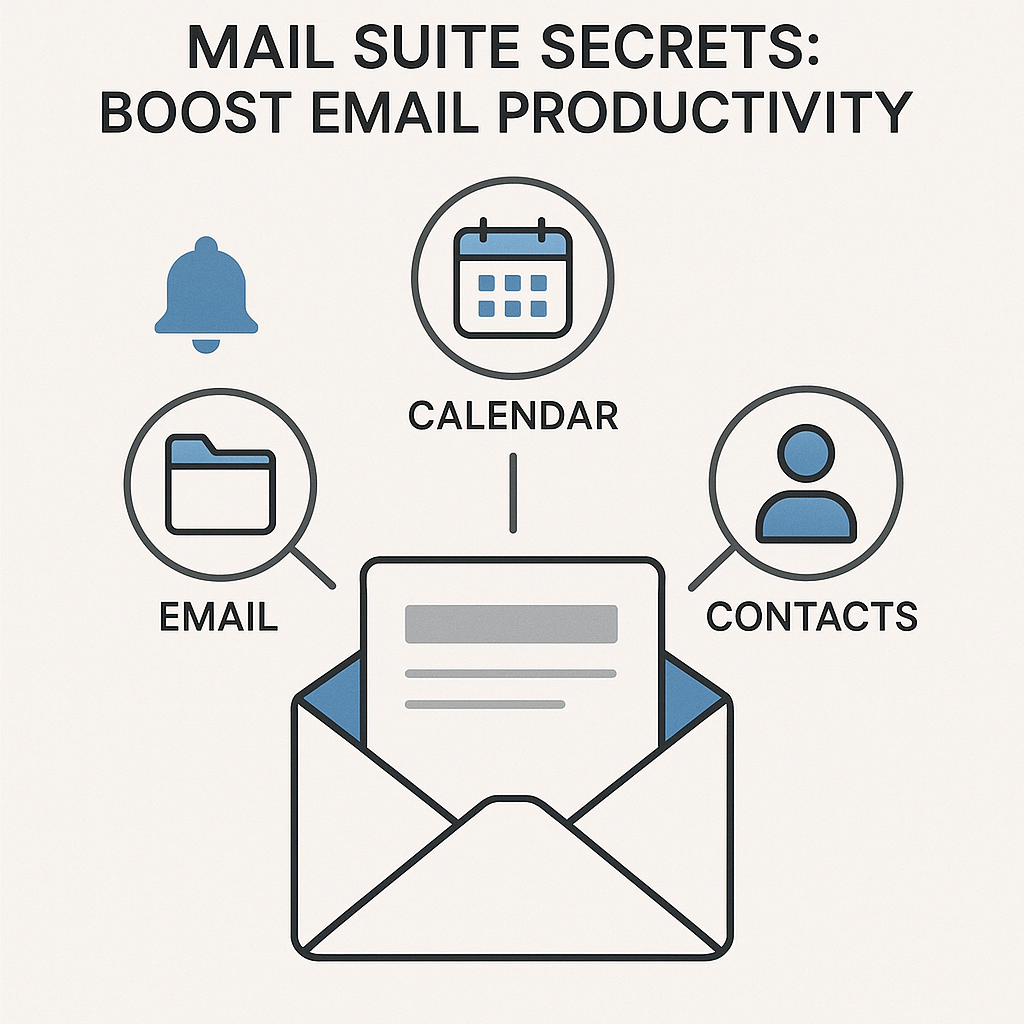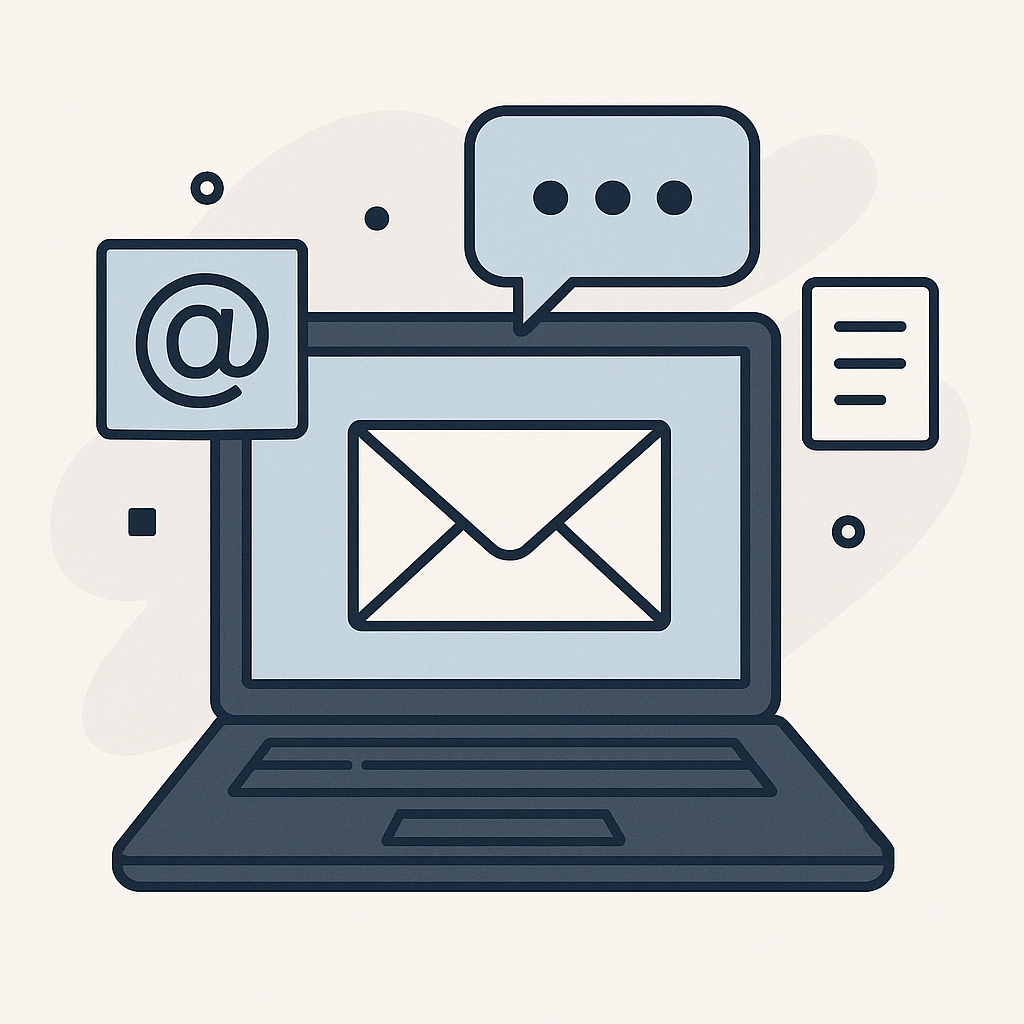Mail Suite Secrets: Boost Email Productivity

In today's hyper-connected business world, email remains a cornerstone of communication, marketing, sales, and customer service. Yet, the sheer volume of emails can be overwhelming, leading to decreased productivity and missed opportunities. What if you could tap into the strategies of your most successful competitors to streamline your own email operations and gain a significant advantage? This is where understanding the concept of a 'mail suite' in the context of competitor intelligence comes into play. By dissecting what your competitors are doing with their email, you can uncover invaluable secrets to boost your own email productivity tools and refine your business email optimization efforts.
What is a Mail Suite in the Context of Competitor Analysis?
When we talk about a 'mail suite' in the realm of competitor analysis, we're not just referring to a single email client or a basic email marketing service. Instead, a competitor's 'mail suite' encompasses their entire ecosystem of email-related tools, strategies, workflows, content, and customer interaction patterns. It's the sum total of how they leverage email communication to achieve their business objectives.
Think of it as a comprehensive system that includes:
- The platforms they use for sending emails (e.g., Mailchimp, HubSpot, SendGrid, custom solutions).
- Their customer relationship management (CRM) integration with email.
- Their strategies for list building and opt-ins.
- The types of automated sequences they employ (welcome series, nurture campaigns, abandoned cart reminders).
- Their approach to email content, design, and messaging.
- How they manage customer service inquiries via email.
- Their sales outreach and follow-up cadences.
- The tools they use for email tracking, analytics, and deliverability.
Essentially, analyzing a competitor's mail suite means reverse-engineering their email operations to understand their strengths, weaknesses, and the underlying logic that drives their communication strategy. This deep dive provides crucial email marketing intelligence that can inform your own decisions.
Why Understanding Competitor Mail Suites Matters for Productivity
In a competitive landscape, staying ahead requires constant learning and adaptation. Understanding your competitors' mail suites offers a unique shortcut to improving your own email performance and, critically, your overall email productivity. Here's why it matters:
- Learning Best Practices: Competitors who are succeeding in email marketing and sales have likely refined their strategies. By observing their effective tactics, you can adopt proven methods, saving you the time and resources of trial and error.
- Identifying Gaps and Opportunities: Analyzing competitor emails can reveal areas where they are underperforming or missing opportunities. This allows you to identify unmet customer needs or communication gaps that you can exploit.
- Benchmarking Your Performance: Understanding industry standards and competitor benchmarks helps you set realistic goals and measure your progress effectively. It tells you where you stand and what's achievable.
- Improving Customer Engagement: Competitors often find innovative ways to engage their audience. By studying their subject lines, content, and calls-to-action, you can learn how to capture attention and drive higher open and click-through rates.
- Optimizing Sales Cycles: For sales teams, observing competitor follow-up strategies, personalization techniques, and communication cadence can significantly enhance sales email productivity and close rates.
- Enhancing Inbox Management: Seeing how competitors handle customer inquiries, support requests, and internal communications can provide insights into efficient inbox management strategies, especially for remote teams.
- Reducing Costs and Wasted Effort: By learning from competitor successes and failures, you can avoid investing in ineffective tools or strategies, thereby optimizing your marketing spend and team resources.
Ultimately, this intelligence empowers you to make more informed decisions, leading to more effective campaigns, better customer relationships, and a significant boost in your team's email productivity.
Key Components to Analyze in a Competitor's Mail Suite
To effectively analyze a competitor's mail suite, you need to know what to look for. Here are the critical components to scrutinize:
Email Marketing Platforms & Infrastructure
While often hidden, clues about the platforms competitors use can sometimes be found. Knowing whether they use a basic ESP or a sophisticated marketing automation platform can indicate their level of investment and capability. Tools like BuiltWith or Wappalyzer can sometimes reveal the technologies powering their websites and email efforts.
Customer Journey & Automation
This is a goldmine for insights. Pay close attention to:
- Opt-in Strategies: What lead magnets (e.g., ebooks, webinars, discounts) do they offer to capture email addresses? How prominent are their signup forms?
- Welcome Sequences: What do they send immediately after someone subscribes? How many emails are in the series, and what's their purpose (onboarding, brand introduction, value proposition)?
- Nurture Campaigns: How do they keep leads engaged over time? What kind of content do they share (educational, promotional, case studies)?
- Promotional Emails: What's their strategy for product launches, sales, and special offers? How frequently do they send them?
- Transactional & Post-Purchase Emails: How do they handle order confirmations, shipping notifications, and post-purchase follow-ups?
- Abandoned Cart Emails (for e-commerce): How do they recover lost sales? What incentives do they offer?
Content & Messaging
The 'what' and 'how' of their communication is crucial:
- Subject Lines: Are they concise, intriguing, personalized, or benefit-driven?
- Tone of Voice: Is it formal, casual, friendly, authoritative?
- Personalization: Do they use subscriber names, company names, or other dynamic content?
- Calls-to-Action (CTAs): Are they clear, compelling, and easy to find?
- Design & Layout: Is their email visually appealing? Is it mobile-responsive?
- Frequency: How often do they send emails? Is there a discernible pattern?
Deliverability & Reputation Management
While harder to directly observe, you can infer aspects of their deliverability:
- Unsubscribe Links: Are they clear and easy to find?
- Bounce Handling: Do they appear to manage bounce rates effectively?
- Email Cleaning: Do they seem to maintain a clean list? Understanding how to improve your own email deliverability is key, and learning from how others manage it can be beneficial. As MailSuite highlights, best practices are essential.
Inbox Management & Customer Service
For businesses focused on customer support or B2B interactions, observe:
- Response Times: How quickly do they acknowledge and respond to inquiries?
- Resolution Process: How do they handle support tickets or customer issues via email?
- Internal Communication: For insights into remote work email tools and strategies, look at how they manage internal team communication if that information is accessible.
Mastering email inbox management strategies is vital, and seeing how competitors tackle it provides valuable benchmarks. For more on this, explore insights from articles like Mastering Email Inbox Management: AI & Human Synergy.
Sales Email Productivity
For sales-focused analysis:
- Follow-up Cadence: How often do they follow up after an initial contact or demo?
- Personalization Depth: How much research appears to go into their sales emails?
- CRM Integration: How seamlessly do their sales communications seem integrated with their customer data?
Methods for Gathering Competitor Mail Suite Intelligence
You don't need to be a detective with advanced hacking skills to gather this information. Here are practical and ethical methods:
- Subscribe to Their Email Lists: This is the most direct method. Sign up for their newsletters, promotional emails, and any free content they offer. This allows you to experience their email campaigns firsthand, observe their frequency, content, and offers.
- Analyze Their Website: Study their website for opt-in forms, lead magnets, and calls-to-action related to email subscriptions. Note the language they use and the value they promise.
- Utilize Technology Stack Tools: As mentioned, tools like BuiltWith and Wappalyzer can help identify the software and platforms competitors are using, including their email marketing service providers (ESPs).
- Monitor Social Media and Public Communications: Competitors often announce new email campaigns, content series, or customer service initiatives on social media or through press releases.
- Sign Up for Free Trials or Demos: If a competitor offers a free trial for their product or service, sign up. This provides an excellent opportunity to observe their onboarding email sequences and initial customer communication.
- Observe Customer Service Interactions (where possible): If you interact with a competitor as a customer, pay attention to their email response times and the quality of their support.
- Use Email Tracking Tools (ethically): While you can't directly track a competitor's emails without their consent, understanding how email tracking works can inform your own strategies. Tools like those offered by MailSuite provide real-time alerts on recipient engagement.
By systematically applying these methods, you can build a comprehensive picture of your competitors' email operations.
Leveraging Competitor Mail Suite Insights to Improve Your Own Strategy
Gathering intelligence is only half the battle; the real value lies in applying these insights to enhance your own email strategy and boost business email optimization.
- Refine Your Opt-in Strategies: If competitors are seeing success with specific lead magnets, consider creating similar or improved offers. Analyze the copy and design of their signup forms for inspiration.
- Optimize Automation Workflows: Study their welcome series, nurture sequences, and follow-up emails. Identify what makes them effective (e.g., content structure, timing, CTAs) and adapt these elements for your own campaigns.
- Enhance Content and Messaging: Borrow successful subject line formulas, personalize your content based on observed competitor tactics, and ensure your CTAs are as compelling.
- Improve Deliverability Practices: Learn from how competitors manage their email lists and handle unsubscribes. Implementing robust email cleaning can significantly improve your sender reputation, as highlighted by resources on general email productivity.
- Boost Sales Email Productivity: Adopt effective follow-up cadences, personalize your outreach based on what seems to resonate with prospects, and ensure your sales emails are concise and value-driven.
- Streamline Inbox Management: Implement efficient inbox management strategies by observing how competitors handle customer inquiries or manage their internal communications. This is particularly relevant for teams relying on remote work email tools.
- Identify New Tools to Consider: If competitors are using specific tools that seem to drive significant results, it might be worth investigating those email productivity tools for your own business.
By strategically adapting proven competitor tactics, you can accelerate your learning curve and achieve superior email performance.
AI's Role in Analyzing and Optimizing Your Mail Suite
The sheer volume of data involved in analyzing competitor email strategies and optimizing your own can be daunting. This is where Artificial Intelligence (AI) emerges as a powerful ally, transforming how businesses approach email communication and productivity.
AI can significantly enhance your business email optimization efforts in several ways:
- Automated Data Analysis: AI tools can sift through vast amounts of competitor email data, identifying patterns in subject lines, content, sending times, and engagement metrics far faster and more accurately than manual review.
- Predictive Analytics: AI can forecast which email content, subject lines, or send times are most likely to resonate with specific audience segments, leading to higher open and click-through rates.
- Personalization at Scale: AI-powered solutions can dynamically personalize email content for individual recipients based on their past interactions, preferences, and behavioral data, dramatically improving relevance and engagement.
- Intelligent Inbox Management: AI can help manage your own inbox by prioritizing emails, suggesting responses, scheduling messages, and automating repetitive tasks. This is crucial for improving sales email productivity and general email productivity tools.
- AI-Powered Content Generation: Tools can assist in drafting email copy, subject lines, and even entire campaign sequences, providing a strong starting point or optimizing existing content.
For busy professionals and teams, leveraging intelligent tools is crucial. Consider integrating an ai executive assistant to help streamline your workflow, analyze communication patterns, and automate repetitive tasks, freeing you up to focus on strategic outreach and engagement. Such tools are vital for staying efficient in a fast-paced environment. Exploring the benefits of email AI can unlock new levels of productivity and effectiveness.
By incorporating these advanced AI email solutions, you can not only analyze competitor strategies more effectively but also elevate your own email campaigns to new heights of performance and efficiency.
Actionable Steps to Enhance Your Email Productivity Based on Findings
Ready to put your competitor analysis into action? Follow these steps to translate insights into tangible improvements in your email productivity and strategy:
- Define Your Objectives: Before diving in, clarify what you want to achieve. Are you aiming for higher open rates, better lead conversion, improved customer retention, or faster sales cycles? Clear goals will guide your analysis and implementation.
- Identify Key Competitors: Select 3-5 direct competitors whose email strategies you want to analyze. Consider both market leaders and emerging players.
- Gather Intelligence Systematically: Implement the methods outlined in Section 4. Subscribe, monitor, analyze, and document your findings methodically. Create a spreadsheet or document to track observations.
- Analyze and Synthesize Findings: Look for patterns, commonalities, and standout tactics among your competitors. Identify what seems to be working well for them and where they might be falling short.
- Prioritize Actions: Not all insights are equally valuable. Prioritize the changes that align with your objectives and have the potential for the greatest impact on your email productivity and campaign performance.
- Implement and Test: Roll out your new strategies. This could involve updating your opt-in forms, revising your autoresponder sequences, tweaking subject lines, or changing your follow-up cadence. Use A/B testing where possible to validate your changes.
- Measure Results and Iterate: Continuously monitor your email performance metrics (open rates, click-through rates, conversion rates, reply rates). Compare them against your benchmarks and competitor performance.
- Refine and Repeat: Email marketing is an ongoing process. Use the data from your measurements to further refine your strategy, test new approaches, and stay ahead of the curve.
By following this structured approach, you can ensure that your competitor analysis directly translates into enhanced email productivity and business growth.
Case Studies: Businesses That Gained an Edge Through Mail Suite Analysis
Real-world examples demonstrate the power of competitor mail suite analysis:
Case Study 1: E-commerce Retailer Boosts Abandoned Cart Recovery
An online fashion retailer noticed a significant number of customers abandoning their shopping carts. By subscribing to their top 3 competitors, they discovered that competitors were sending a series of 3-4 abandoned cart emails, often with increasing discounts and a sense of urgency. The retailer's own approach was a single, generic reminder. After analyzing the competitors' messaging and timing, they implemented a similar multi-email sequence, including a small discount in the second email and a larger one in the third, coupled with a countdown timer. This led to a 15% increase in recovered sales within the first quarter.
Case Study 2: SaaS Startup Enhances Lead Nurturing
A B2B SaaS company struggled with converting free trial users into paying customers. Their competitor analysis revealed that leading SaaS providers were using their email nurturing sequences not just for product promotion, but primarily for education. Competitors shared valuable industry insights, customer success stories, and tips for maximizing the product's value. The startup revamped its own nurture stream to include more educational content and case studies, resulting in a 20% higher conversion rate from trial to paid subscription by providing consistent value.
Case Study 3: Consulting Firm Improves Sales Email Productivity
A management consulting firm wanted to increase the number of discovery calls booked through their outbound sales efforts. They observed that their competitors were not only personalizing emails based on prospect roles but also maintaining a consistent, value-driven follow-up cadence over several weeks. The firm adopted a similar strategy, researching prospects more thoroughly for personalized content and implementing a structured, multi-touch follow-up plan. This approach boosted their meeting booking rates by 25%, directly improving sales email productivity.
These examples highlight how adopting elements from successful competitor mail suites can yield significant, measurable improvements in business outcomes.
Conclusion
In the relentless pursuit of efficiency and competitive advantage, understanding your competitors' email strategies is no longer optional—it's essential. By dissecting their 'mail suite,' you gain invaluable insights into what works, what doesn't, and how you can optimize your own email marketing, sales, and communication efforts. From refining opt-in strategies and automating workflows to enhancing content and improving deliverability, the lessons learned can directly translate into increased email productivity and stronger business results.
Leveraging modern tools, including AI-powered solutions and intelligent assistants, can further amplify your ability to gather, analyze, and act on this competitive intelligence. Don't let your email operations run on guesswork. Start analyzing your competitors' email strategies today and unlock your own path to superior email performance, driving growth and efficiency in every communication.
```


